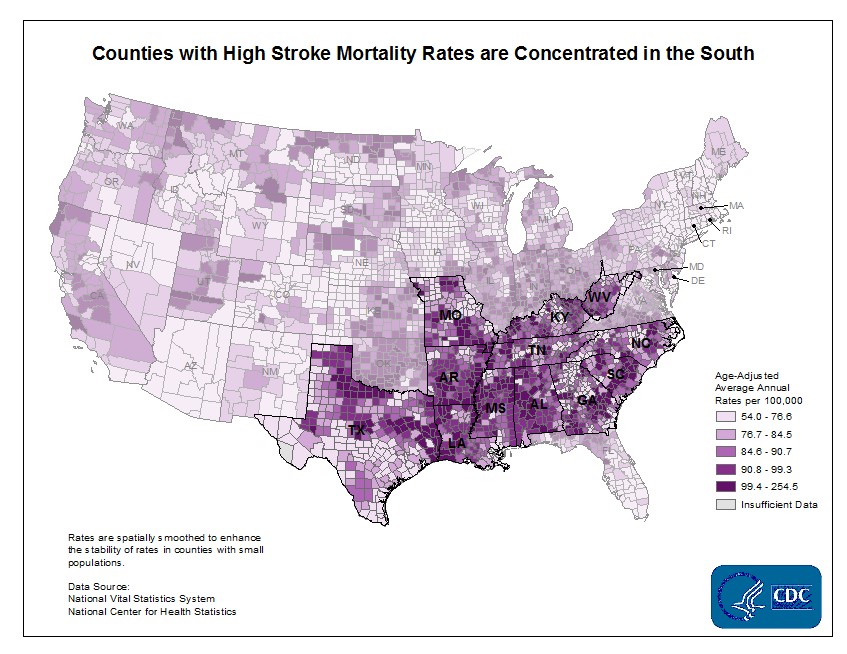UAB Researchers to Study Silent Strokes
A stroke is typically caused by a clot that cuts off blood supply to the brain, and when it happens, there are usually signs, such as facial drooping and slurred speech. But silent strokes, caused by smaller clots, are unrecognizable, according to UAB neuropsychologist Ronald Lazar.
“You have the same kind of signals, but they’re so small that, in and of themselves, each one does not cause symptoms that you’re going to recognize,” Lazar says, “But over many years, we think they do cause a problem.”
He says previous studies show that silent strokes increase the likelihood of having a larger stroke and of developing dementia. But in general, Lazar says there is a lack of research about the impact of these small neurological events and ways to prevent them. In a new study funded by the National Institutes of Health, he and fellow researchers at UAB and Stanford University hope to fill in some of the gaps.

Centers for Disease Control and Prevention
Alabama has one of the highest stroke mortality rates in the country.
The study, which is part of a larger national study called ARCADIA, will enroll 500 patients who have already had a stroke, and researchers will follow them for three years. During that time, participants will take a daily dose of an anticoagulant drug, either Aspirin or Apixaban. At the beginning and end of the study, investigators will use Magnetic Resonance Imaging to look for evidence of silent strokes. They will also conduct annual interviews to monitor for cognitive decline.
Lazar says they hope to improve understanding of how silent strokes might affect cognitive function overtime and study the preventative impact of both anticoagulant drugs.
“The fundamental goal is trying to minimize the occurrence of stroke in patients who might ordinarily be at high risk,” Lazar says.
Birmingham is 3rd worst in the Southeast for ozone pollution, new report says
The American Lung Association's "State of the Air" report shows some metro areas in the Gulf States continue to have poor air quality.
Why haven’t Kansas and Alabama — among other holdouts — expanded access to Medicaid?
Only 10 states have not joined the federal program that expands Medicaid to people who are still in the "coverage gap" for health care
Once praised, settlement to help sickened BP oil spill workers leaves most with nearly nothing
Thousands of ordinary people who helped clean up after the 2010 BP oil spill in the Gulf of Mexico say they got sick. A court settlement was supposed to help compensate them, but it hasn’t turned out as expected.
Q&A: How harm reduction can help mitigate the opioid crisis
Maia Szalavitz discusses harm reduction's effectiveness against drug addiction, how punitive policies can hurt people who need pain medication and more.
The Gulf States Newsroom is hiring a Community Engagement Producer
The Gulf States Newsroom is seeking a curious, creative and collaborative professional to work with our regional team to build up engaged journalism efforts.
Gambling bills face uncertain future in the Alabama legislature
This year looked to be different for lottery and gambling legislation, which has fallen short for years in the Alabama legislature. But this week, with only a handful of meeting days left, competing House and Senate proposals were sent to a conference committee to work out differences.







